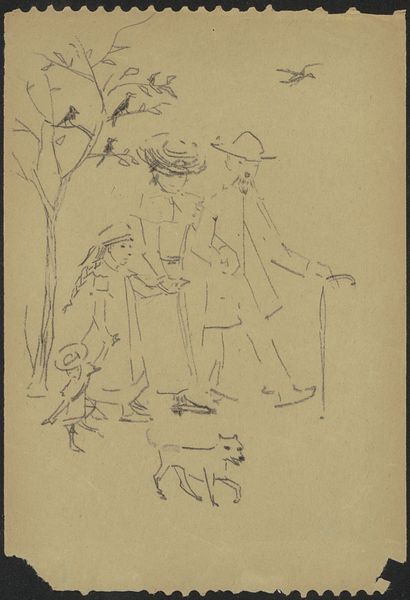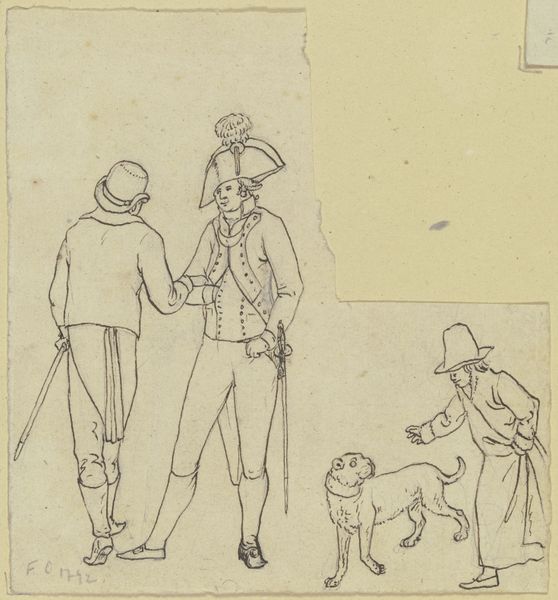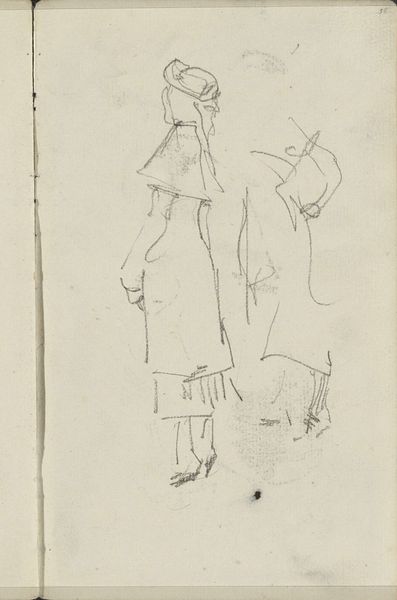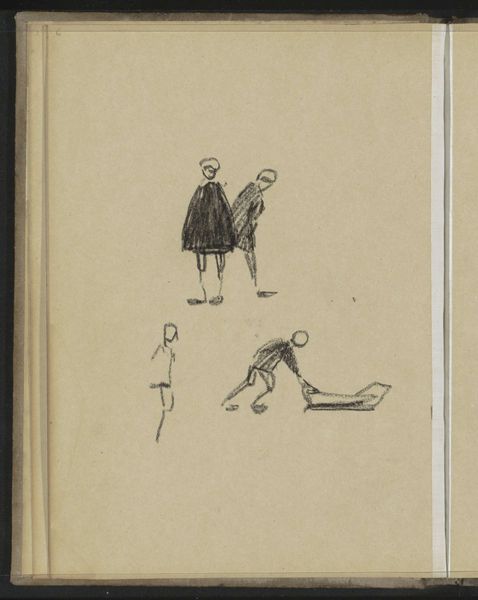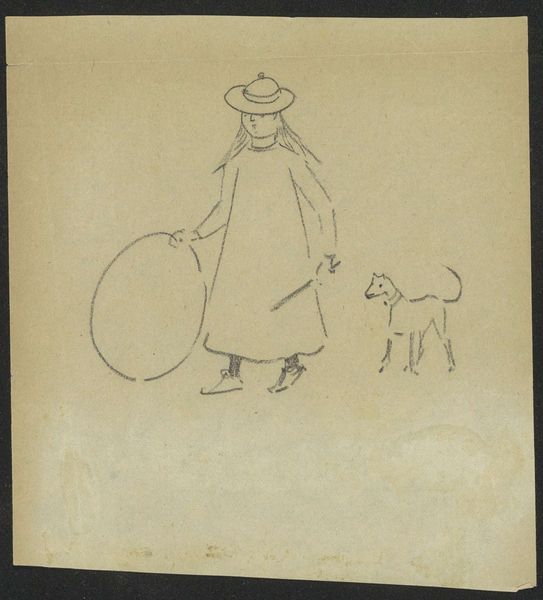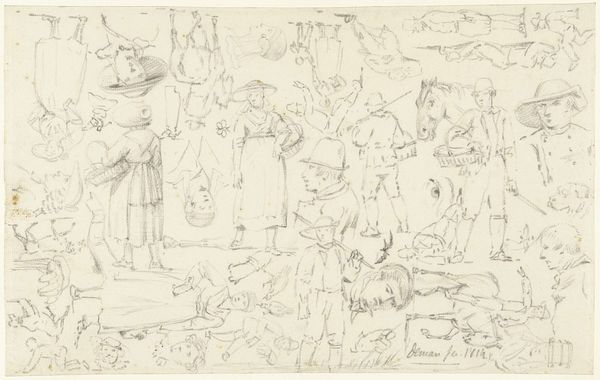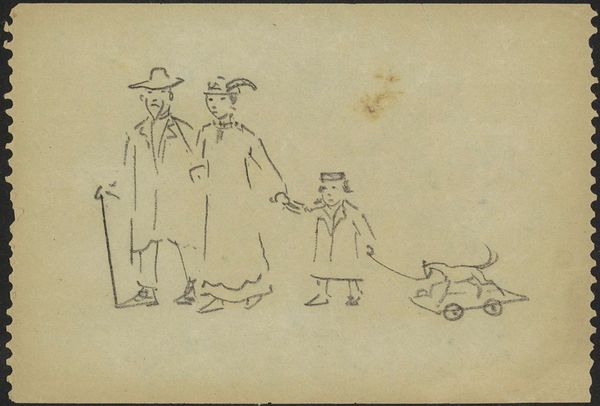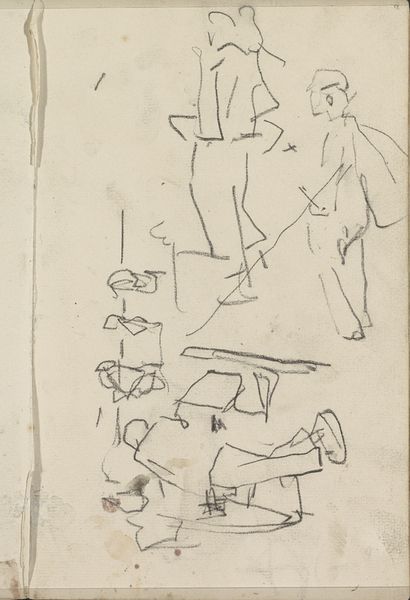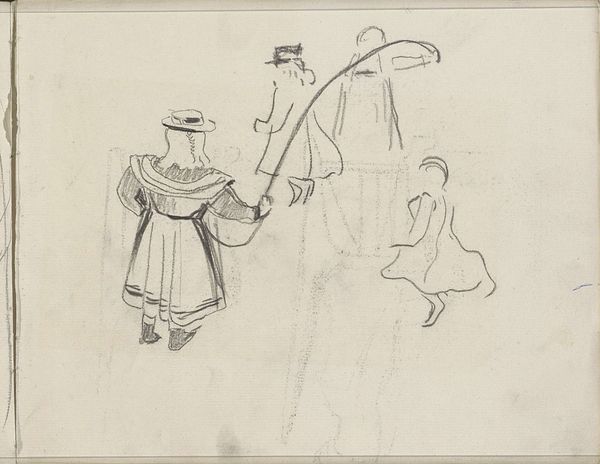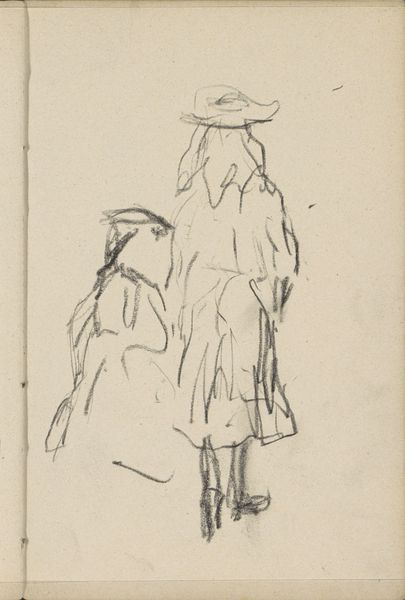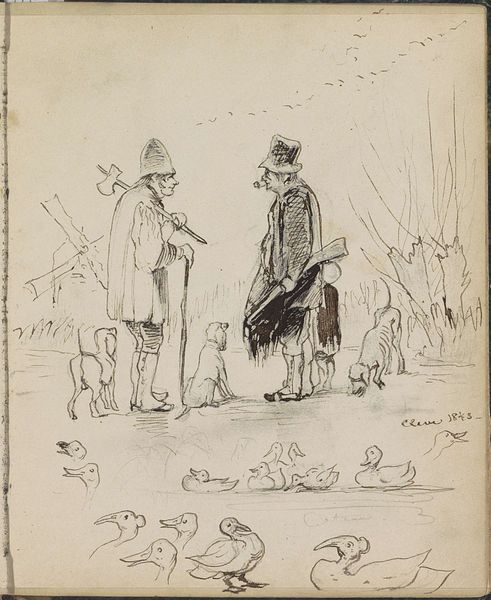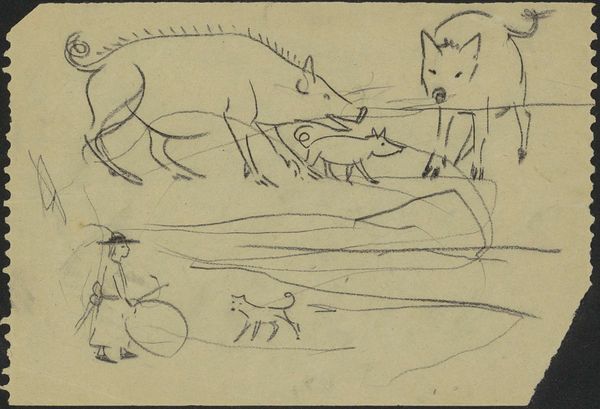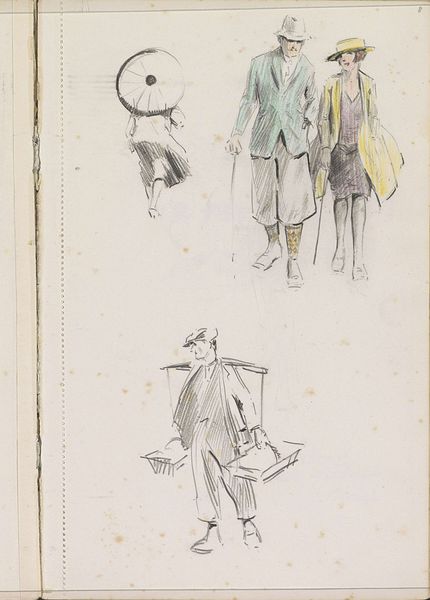
Studieblad, onder andere met een wandelend paar, katten en muizen c. 1904 - 1906
0:00
0:00
drawing, ink, pencil
#
portrait
#
drawing
#
ink drawing
#
narrative-art
#
figuration
#
ink
#
pencil
#
genre-painting
Dimensions: height 174 mm, width 125 mm
Copyright: Rijks Museum: Open Domain
Editor: Here we have Gerrit Willem Dijsselhof's "Studieblad, onder andere met een wandelend paar, katten en muizen," an ink and pencil drawing dating from around 1904-1906. I'm immediately struck by its sort of whimsical, storybook feel. It's as if he's quickly jotted down a collection of characters and animals from different narratives. What jumps out at you about this work? Curator: What interests me most is Dijsselhof’s process, the labour evident in this 'study sheet.' Forget any preciousness. See how freely he moves between a refined, almost caricatured portrait of bourgeois society strolling with umbrella in tow, and a detailed rendering of a tabby cat, hunting mice? This wasn’t simply sketching for “high art,” but an exploration of form, testing his skill in rendering different subjects and materials, blurring boundaries. Editor: So you're saying he wasn't just practicing to paint something grand, but exploring different aspects of craft, the 'making' of art itself? Curator: Exactly. And consider the implications. The materiality of the ink, pencil, and paper becomes as important as the subjects depicted. He’s examining the act of production, the labour involved in transforming humble materials into representations of the world, even fleeting observations. Look at how the quick, economical lines define the deer versus the dense hatching which constructs the cats - how is the relationship to those subjects being expressed in his specific making process? Editor: I hadn't thought about the differing line qualities and their connection to his engagement with those various figures! It’s like the process IS the meaning. Curator: Precisely. And in doing so, Dijsselhof questions those historical artistic hierarchies between preparatory sketches and finished works, high art and illustration, observing social status and the humble housecat. What do you make of the blank background Dijsselhof employed in this image? Editor: It reinforces that 'anything-goes' feeling, it frees up the work as an exploratory zone for testing different modes of representations. I appreciate seeing art in terms of material practice, of questioning established hierarchies!
Comments
No comments
Be the first to comment and join the conversation on the ultimate creative platform.
